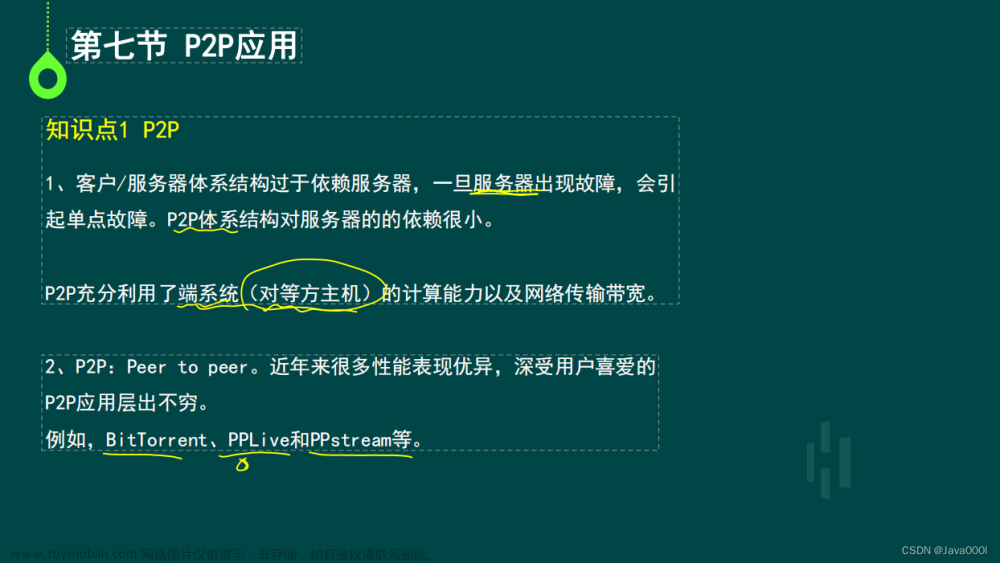欢迎大家一起探讨~如果可以帮到大家请为我点赞关注哦~后续会持续更新
问题:
1.Spring MVC框架中的MyBatis集成是什么?请举例说明如何集成MyBatis。
解析:
Spring MVC框架中的MyBatis集成是指通过Spring框架将MyBatis框架集成到Spring MVC应用程序中,从而实现数据访问层和Web层的无缝整合。通过MyBatis集成,开发者可以使用MyBatis来管理数据访问,从而提高应用程序的性能和可维护性。
以下是一个简单的示例,展示如何在Spring MVC中集成MyBatis:
1.添加MyBatis和相关依赖
在pom.xml文件中添加MyBatis和相关的依赖,如下所示:
<dependency>
<groupId>org.mybatis</groupId>
<artifactId>mybatis</artifactId>
<version>${mybatis.version}</version>
</dependency>
<dependency>
<groupId>org.mybatis</groupId>
<artifactId>mybatis-spring</artifactId>
<version>${mybatis-spring.version}</version>
</dependency>
<dependency>
<groupId>mysql</groupId>
<artifactId>mysql-connector-java</artifactId>
<version>${mysql.version}</version>
</dependency>其中,${mybatis.version}、${mybatis-spring.version}和${mysql.version}是版本号变量,需要根据实际情况进行设置。
2.配置数据源和SqlSessionFactory
在Spring配置文件中配置数据源和SqlSessionFactory,如下所示:
<bean id="dataSource" class="org.springframework.jdbc.datasource.DriverManagerDataSource">
<property name="driverClassName" value="com.mysql.jdbc.Driver" />
<property name="url" value="jdbc:mysql://localhost:3306/mybatis_demo" />
<property name="username" value="root" />
<property name="password" value="password" />
</bean>
<bean id="sqlSessionFactory" class="org.mybatis.spring.SqlSessionFactoryBean">
<property name="dataSource" ref="dataSource" />
<property name="mapperLocations" value="classpath*:mapper/*.xml" />
</bean>上述代码中,我们定义了一个DriverManagerDataSource对象作为数据源,并设置了连接信息和用户名密码。同时,我们定义了一个SqlSessionFactoryBean对象,并将其依赖于数据源对象,并设置了Mapper文件所在的路径。
3.配置Mapper扫描器
在Spring配置文件中配置Mapper扫描器,如下所示:
<bean class="org.mybatis.spring.mapper.MapperScannerConfigurer">
<property name="basePackage" value="com.example.dao" />
</bean>上述代码中,我们配置了一个MapperScannerConfigurer对象,并设置了Mapper接口所在的包名。这样,Spring会自动扫描指定包下的Mapper接口,并将其注入到应用程序中。
4.编写Mapper接口和Mapper XML文件
在应用程序中定义Mapper接口和Mapper XML文件,如下所示:
public interface UserMapper {
User getUserById(int id);
}
<mapper namespace="com.example.dao.UserMapper">
<select id="getUserById" parameterType="int" resultType="com.example.model.User">
select * from user where id = #{id}
</select>
</mapper>上述代码中,我们定义了一个UserMapper接口,并在Mapper XML文件中实现了该接口的getUserById()方法。该方法可以根据用户ID查询用户信息。
5.在Service中使用Mapper
在Spring Service中使用Mapper接口,如下所示:
@Service
public class UserServiceImpl implements UserService {
@Autowired
private UserMapper userMapper;
@Override
public User getUserById(int id) {
return userMapper.getUserById(id);
}
}上述代码中,我们定义了一个UserServiceImpl类作为Service层的实现类,并使用@Autowired注解将UserMapper接口注入到该类中。在getUserById()方法中,我们使用UserMapper接口查询用户信息,并返回查询结果。
通过以上步骤,我们成功地将MyBatis集成到Spring MVC应用程序中,并实现了数据访问和Web层的无缝整合。开发者可以根据实际需求选择最合适的方式来使用MyBatis,如使用注解或XML文件来配置Mapper等。
问题:
2.Spring MVC框架中的配置文件是什么?请举例说明如何配置Spring MVC。
解析:
在Spring MVC框架中,配置文件用于配置应用程序的各种属性、组件和功能。Spring MVC支持多种类型的配置文件,包括XML文件、JavaConfig类和属性文件等。其中,XML文件是最常用的一种配置文件类型。
以下是一个简单的示例,展示如何使用XML文件配置Spring MVC:
1.创建Spring配置文件
在项目的src/main/resources目录下创建一个名为“spring-servlet.xml”的Spring配置文件,如下所示
<beans xmlns="http://www.springframework.org/schema/beans"
xmlns:context="http://www.springframework.org/schema/context"
xmlns:mvc="http://www.springframework.org/schema/mvc"
xmlns:xsi="http://www.w3.org/2001/XMLSchema-instance"
xsi:schemaLocation="http://www.springframework.org/schema/beans
http://www.springframework.org/schema/beans/spring-beans.xsd
http://www.springframework.org/schema/context
http://www.springframework.org/schema/context/spring-context.xsd
http://www.springframework.org/schema/mvc
http://www.springframework.org/schema/mvc/spring-mvc.xsd">
<!-- 配置控制器 -->
<context:component-scan base-package="com.example.controller" />
<!-- 配置视图解析器 -->
<bean id="viewResolver" class="org.springframework.web.servlet.view.InternalResourceViewResolver">
<property name="prefix" value="/WEB-INF/jsp/" />
<property name="suffix" value=".jsp" />
</bean>
<!-- 配置静态资源访问 -->
<mvc:resources mapping="/static/**" location="/static/" />
<!-- 配置异常处理 -->
<bean class="org.springframework.web.servlet.handler.SimpleMappingExceptionResolver">
<property name="exceptionMappings">
<props>
<prop key="java.lang.Exception">error</prop>
</props>
</property>
</bean>
<!-- 配置文件上传 -->
<bean id="multipartResolver" class="org.springframework.web.multipart.commons.CommonsMultipartResolver">
<property name="maxUploadSize" value="5242880" />
</bean>
</beans>
上述代码中,我们定义了一个Spring配置文件,并使用各种元素来配置Spring MVC应用程序的各种属性、组件和功能。具体来说,我们使用context:component-scan元素来扫描控制器组件,使用<bean>元素来配置视图解析器、异常处理和文件上传等功能,使用mvc:resources元素来配置静态资源访问。
2.配置Web应用程序部署描述符
在Web应用程序部署描述符(如web.xml文件)中配置Spring MVC的DispatcherServlet,如下所示:
<web-app>
<display-name>Spring MVC Application</display-name>
<!-- 配置DispatcherServlet -->
<servlet>
<servlet-name>spring</servlet-name>
<servlet-class>org.springframework.web.servlet.DispatcherServlet</servlet-class>
<init-param>
<param-name>contextConfigLocation</param-name>
<param-value>/WEB-INF/spring-servlet.xml</param-value>
</init-param>
<load-on-startup>1</load-on-startup>
</servlet>
<servlet-mapping>
<servlet-name>spring</servlet-name>
<url-pattern>/</url-pattern>
</servlet-mapping>
</web-app>上述代码中,我们配置了一个名为“spring”的DispatcherServlet,并将其映射到Web应用程序的根路径上。在<servlet>元素中,我们使用<servlet-class>元素指定了DispatcherServlet的类名,并使用<contextConfigLocation>元素指定了Spring配置文件的路径。
通过以上步骤,我们成功地配置了Spring MVC应用程序,并实现了控制器、视图解析器、静态资源访问、异常处理和文件上传等功能。开发者可以根据实际需求选择最合适的方式来配置Spring MVC,如使用JavaConfig类或属性文件来配置Spring MVC等。
问题:
3.Spring MVC框架中的本地线程绑定是什么?请举例说明如何使用本地线程绑定。
解析:
Spring MVC框架中的本地线程绑定是指将当前线程与一个特定的对象关联起来,从而实现在同一线程内共享该对象。在Spring MVC中,本地线程绑定可以用于实现跨层数据传递、事务管理、日志记录等功能。
以下是一个简单的示例,展示如何使用本地线程绑定:
1.定义一个存储用户信息的类
在应用程序中定义一个名为“UserContext”的类,并在该类中定义了一个ThreadLocal对象和一些静态方法,如下所示:
public class UserContext {
private static final ThreadLocal<User> userHolder = new ThreadLocal<>();
public static void setUser(User user) {
userHolder.set(user);
}
public static User getUser() {
return userHolder.get();
}
public static void clear() {
userHolder.remove();
}
}上述代码中,我们定义了一个UserContext类,并使用ThreadLocal对象来存储用户信息。通过定义静态方法,我们可以在应用程序的任意位置访问和修改当前线程关联的用户信息。
2.使用本地线程绑定传递用户信息
在Spring MVC应用程序中,我们可以使用本地线程绑定来传递用户信息,如下所示:
@Controller
@RequestMapping("/users")
public class UserController {
@Autowired
private UserService userService;
@RequestMapping(value = "/login", method = RequestMethod.POST)
public String login(@RequestParam("username") String username, @RequestParam("password") String password) {
// Authenticate user
User user = userService.authenticate(username, password);
// Set user context
UserContext.setUser(user);
// Redirect to dashboard page
return "redirect:/users/dashboard";
}
@RequestMapping(value = "/dashboard", method = RequestMethod.GET)
public String dashboard(Model model) {
// Get user context
User user = UserContext.getUser();
// Show dashboard page
model.addAttribute("user", user);
return "dashboard";
}
@RequestMapping(value = "/logout", method = RequestMethod.GET)
public String logout() {
// Clear user context
UserContext.clear();
// Redirect to login page
return "redirect:/users/login";
}
}上述代码中,我们在login()方法中使用UserService接口验证用户信息,并将验证通过的用户信息存储到UserContext类中。在dashboard()方法中,我们通过UserContext类获取当前线程关联的用户信息,并将其传递到页面中。在logout()方法中,我们清除当前线程关联的用户信息。通过这种方式,我们可以在同一线程内共享用户信息,从而实现了跨层数据传递的功能。
需要注意的是,使用本地线程绑定时需要注意内存泄漏的问题。在使用完ThreadLocal对象后,需要及时调用remove()方法将其从当前线程中移除,否则会导致内存泄漏。
问题:
4.Spring MVC框架中的Cookie和Session是什么?请举例说明如何使用Cookie和Session。
解析:
Spring MVC框架中的Cookie和Session都是用于在Web应用程序中传递和存储数据的机制。其中,Cookie是一种在客户端存储数据的机制,而Session是一种在服务器端存储数据的机制。在Spring MVC中,Cookie和Session可以用于实现用户认证、用户跟踪、数据缓存等功能。
以下是一个简单的示例,展示如何使用Cookie和Session:
1.使用Cookie实现用户认证
在Spring MVC应用程序中,我们可以使用Cookie来存储用户认证信息,如下所示:
@Controller
@RequestMapping("/users")
public class UserController {
@Autowired
private UserService userService;
@RequestMapping(value = "/login", method = RequestMethod.POST)
public String login(@RequestParam("username") String username, @RequestParam("password") String password, HttpServletResponse response) {
// Authenticate user
User user = userService.authenticate(username, password);
if (user != null) {
// Create authentication cookie
Cookie cookie = new Cookie("user", user.getUsername());
cookie.setMaxAge(3600); // set cookie expiry time to 1 hour
response.addCookie(cookie);
// Redirect to dashboard page
return "redirect:/users/dashboard";
} else {
// Show login error return "login_error";
}
}
@RequestMapping(value = "/dashboard", method = RequestMethod.GET)
public String dashboard(HttpServletRequest request, Model model) {
// Get authentication cookie
Cookie[] cookies = request.getCookies();
String username = null;
if (cookies != null) {
for (Cookie cookie : cookies) {
if (cookie.getName().equals("user")) {
username = cookie.getValue();
break;
}
}
}
// Check if user is authenticated
if (username != null) {
// Show dashboard page
model.addAttribute("username", username);
return "dashboard";
} else {
// Redirect to login page
return "redirect:/users/login";
}
}
@RequestMapping(value = "/logout", method = RequestMethod.GET)
public String logout(HttpServletResponse response) {
// Remove authentication cookie
Cookie cookie = new Cookie("user", null);
cookie.setMaxAge(0);
response.addCookie(cookie);
// Redirect to login page
return "redirect:/users/login";
}
}上述代码中,我们在login()方法中使用UserService接口验证用户信息,并在验证通过后创建一个名为“user”的Cookie,并将其添加到响应中。在dashboard()方法中,我们通过HttpServletRequest对象获取请求中的“user”Cookie,并根据其值来判断用户是否已经通过认证。在logout()方法中,我们移除“user”Cookie,并将其添加到响应中。通过这种方式,我们就可以使用Cookie来实现用户认证。
2.使用Session实现数据缓存
在Spring MVC应用程序中,我们可以使用Session来缓存数据,如下所示:
@Controller
@RequestMapping("/products")
public class ProductController {
@Autowired
private ProductService productService;
@RequestMapping(value = "/list", method = RequestMethod.GET)
public String listProducts(HttpSession session, Model model) {
// Check if products are already cached in session
List<Product> products = (List<Product>) session.getAttribute("products");
if (products == null) {
// Fetch products from database
products = productService.getProducts();
// Cache products in session
session.setAttribute("products", products);
}
// Show product list page
model.addAttribute("products", products);
return "product_list";
}
@RequestMapping(value = "/clearCache", method = RequestMethod.GET)
public String clearCache(HttpSession session) {
// Remove products from session cache
session.removeAttribute("products");
// Redirect to product list page
return "redirect:/products/list";
}
}上述代码中,我们在listProducts()方法中使用HttpSession对象来获取名为“products”的Session属性,并判断其是否为空。如果为空,则从数据库中获取产品数据,并将其缓存到Session中。在clearCache()方法中,我们移除Session中的“products”属性。通过这种方式,我们就可以使用Session来缓存数据,提高应用程序的性能。
需要注意的是,使用Cookie和Session时需要注意安全性的问题。特别是在使用Cookie时,需要注意防止跨站脚本攻击和跨站请求伪造攻击等安全威胁。为了确保应用程序的安全性,我们应该在设计和实现过程中考虑使用加密、签名、令牌等技术来保护数据的安全性。
问题:
5.Spring MVC框架中的表单验证是什么?请举例说明如何使用表单验证。
解析:
Spring MVC框架中的表单验证是指对用户提交的表单数据进行验证,以确保数据的正确性和完整性。在Spring MVC中,我们可以使用框架提供的校验器(Validator)接口和校验注解(Validation Annotation)来实现表单验证。
以下是一个简单的示例,展示如何使用表单验证:
1.定义一个表单类
在Spring MVC应用程序中,我们需要定义一个表单类来存储用户提交的表单数据,如下所示:
public class LoginForm {
@NotEmpty
private String username;
@NotEmpty
private String password;
// getters and setters
}上述代码中,我们定义了一个名为“LoginForm”的表单类,并使用@NotEmpty注解来标记“username”和“password”属性,表示这两个属性不能为空。
2.创建一个校验器
在Spring MVC应用程序中,我们需要创建一个实现Validator接口的校验器类,如下所示:
@Component
public class LoginFormValidator implements Validator {
@Override
public boolean supports(Class<?> clazz) {
return LoginForm.class.isAssignableFrom(clazz);
}
@Override
public void validate(Object target, Errors errors) {
LoginForm form = (LoginForm) target;
ValidationUtils.rejectIfEmptyOrWhitespace(errors, "username", "NotEmpty");
ValidationUtils.rejectIfEmptyOrWhitespace(errors, "password", "NotEmpty");
}
}上述代码中,我们定义了一个名为“LoginFormValidator”的校验器类,并实现了Validator接口的两个方法。在supports()方法中,我们判断校验器是否支持LoginForm类。在validate()方法中,我们使用ValidationUtils类中的方法来对表单数据进行校验,如果校验失败,则使用Errors对象来记录错误信息。
3.在Controller中使用校验器
在Spring MVC应用程序中,我们需要在Controller中使用校验器,来对用户提交的表单数据进行校验,如下所示:
@Controller
@RequestMapping("/users")
public class UserController {
@Autowired
private LoginFormValidator loginFormValidator;
@RequestMapping(value = "/login", method = RequestMethod.POST)
public String login(@ModelAttribute("loginForm") LoginForm form, BindingResult result) {
loginFormValidator.validate(form, result);
if (result.hasErrors()) {
return "login_form";
} else {
// Authenticate user
User user = userService.authenticate(form.getUsername(), form.getPassword());
// Redirect to dashboard page
return "redirect:/users/dashboard";
}
}
上述代码中,我们在login()方法中使用@ModelAttribute注解来绑定表单数据,并使用BindingResult对象来保存校验结果。在调用校验器的validate()方法时,我们将表单数据和BindingResult对象作为参数传递给校验器。如果校验失败,则返回“login_form”视图,否则认证用户并跳转到控制面板页面。文章来源:https://www.toymoban.com/news/detail-469777.html
通过使用表单验证,我们可以有效地防止应用程序接收到不正确或不完整的表单数据,从而提高应用程序的可靠性和安全性。需要注意的是,在实现表单验证时,我们应该考虑到不同的数据类型和校验规则,并使用多个校验器来实现复杂的校验逻辑。文章来源地址https://www.toymoban.com/news/detail-469777.html
到了这里,关于SpringMVC框架面试专题(初级-中级)-第八节的文章就介绍完了。如果您还想了解更多内容,请在右上角搜索TOY模板网以前的文章或继续浏览下面的相关文章,希望大家以后多多支持TOY模板网!

![[北大肖臻-区块链技术与应用笔记]第八节课——BTC 脚本](https://imgs.yssmx.com/Uploads/2024/01/811979-1.png)
![[北大肖臻-区块链技术与应用笔记]第八节课——BTC 分叉](https://imgs.yssmx.com/Uploads/2024/02/481830-1.png)










